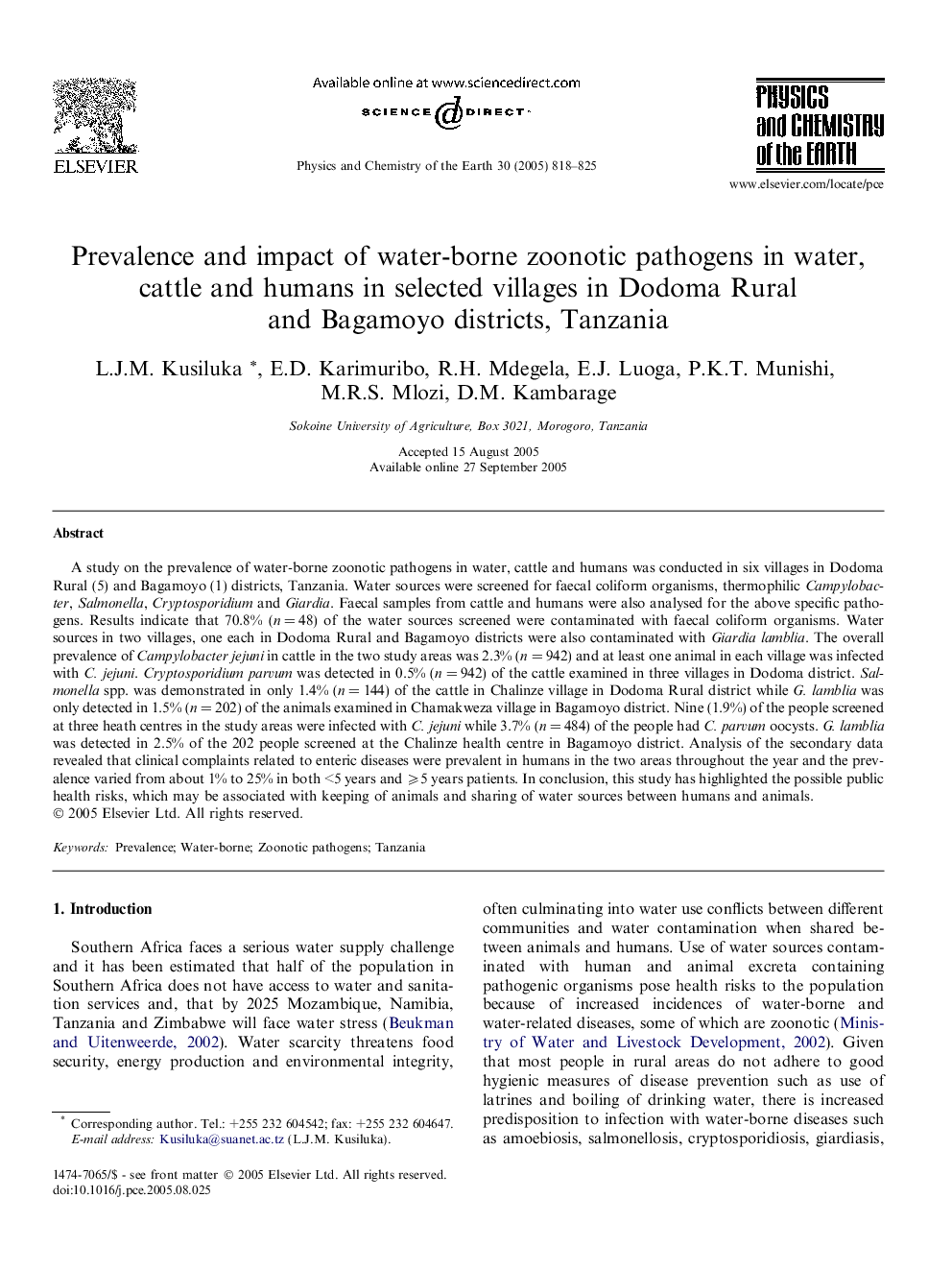| کد مقاله | کد نشریه | سال انتشار | مقاله انگلیسی | نسخه تمام متن |
|---|---|---|---|---|
| 10120031 | 1639413 | 2005 | 8 صفحه PDF | دانلود رایگان |
عنوان انگلیسی مقاله ISI
Prevalence and impact of water-borne zoonotic pathogens in water, cattle and humans in selected villages in Dodoma Rural and Bagamoyo districts, Tanzania
دانلود مقاله + سفارش ترجمه
دانلود مقاله ISI انگلیسی
رایگان برای ایرانیان
کلمات کلیدی
موضوعات مرتبط
مهندسی و علوم پایه
علوم زمین و سیارات
ژئوشیمی و پترولوژی
پیش نمایش صفحه اول مقاله

چکیده انگلیسی
A study on the prevalence of water-borne zoonotic pathogens in water, cattle and humans was conducted in six villages in Dodoma Rural (5) and Bagamoyo (1) districts, Tanzania. Water sources were screened for faecal coliform organisms, thermophilic Campylobacter, Salmonella, Cryptosporidium and Giardia. Faecal samples from cattle and humans were also analysed for the above specific pathogens. Results indicate that 70.8% (n = 48) of the water sources screened were contaminated with faecal coliform organisms. Water sources in two villages, one each in Dodoma Rural and Bagamoyo districts were also contaminated with Giardia lamblia. The overall prevalence of Campylobacter jejuni in cattle in the two study areas was 2.3% (n = 942) and at least one animal in each village was infected with C. jejuni. Cryptosporidium parvum was detected in 0.5% (n = 942) of the cattle examined in three villages in Dodoma district. Salmonella spp. was demonstrated in only 1.4% (n = 144) of the cattle in Chalinze village in Dodoma Rural district while G. lamblia was only detected in 1.5% (n = 202) of the animals examined in Chamakweza village in Bagamoyo district. Nine (1.9%) of the people screened at three heath centres in the study areas were infected with C. jejuni while 3.7% (n = 484) of the people had C. parvum oocysts. G. lamblia was detected in 2.5% of the 202 people screened at the Chalinze health centre in Bagamoyo district. Analysis of the secondary data revealed that clinical complaints related to enteric diseases were prevalent in humans in the two areas throughout the year and the prevalence varied from about 1% to 25% in both <5 years and ⩾5 years patients. In conclusion, this study has highlighted the possible public health risks, which may be associated with keeping of animals and sharing of water sources between humans and animals.
ناشر
Database: Elsevier - ScienceDirect (ساینس دایرکت)
Journal: Physics and Chemistry of the Earth, Parts A/B/C - Volume 30, Issues 11â16, 2005, Pages 818-825
Journal: Physics and Chemistry of the Earth, Parts A/B/C - Volume 30, Issues 11â16, 2005, Pages 818-825
نویسندگان
L.J.M. Kusiluka, E.D. Karimuribo, R.H. Mdegela, E.J. Luoga, P.K.T. Munishi, M.R.S. Mlozi, D.M. Kambarage,